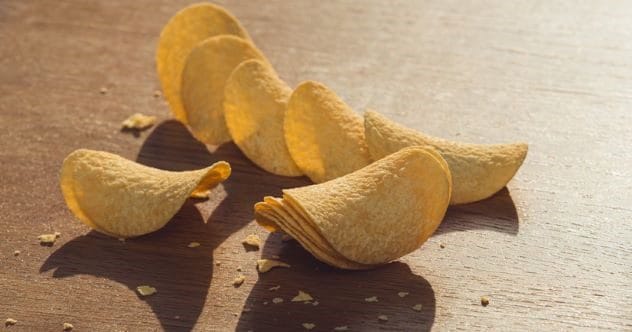Humankind’s relentless pursuit of knowledge often leads us to discover that seemingly impossible things are, in fact, very real. This exciting frontier is filled with unsolved mysteries, adding remarkable new facts to our understanding of history, science, and the natural world. From origami Pringles to solid liquids, here are 10 intriguing cases that break all the rules.
10. A Solid Liquid
For over 50 years, scientists predicted the existence of a bizarre substance known as a supersolid. This material possesses properties of both solids and liquids. It flows like a liquid but maintains the crystalline structure of a solid. While intriguing, most researchers believed it to be impossible.
However, supersolids emerged in an unusual way. Two independent teams—one from MIT in Massachusetts and the other in Zurich, Switzerland—announced in November 2017 that they had created supersolids. Remarkably, they used different approaches to create this exotic substance, achieving the same “impossible” result: solid liquids are now a reality.[1]
9. The Devil’s Hole Pupfish
The Devil’s Hole pupfish defies several factors that should have wiped it out. Trapped in a 10-foot by 20-foot (3 by 6-meter) cavern in Devil’s Hole, Nevada, they’ve been isolated from other pupfish for 1,000 to 20,000 years. Recent research revealed that these fish are so inbred that they shouldn’t even be alive. Their genomes are, on average, 58% identical, making them possibly the most inbred animals on Earth.
Adding to the mystery, a 2022 study found that they’ve lost two crucial genes—one for sperm production and one that helps other pupfish survive in low-oxygen environments. Despite this, the Devil’s Hole pupfish reproduce and thrive in a stagnant, deoxygenated pool. How do they do it? It remains a mystery.[2]
8. The Ninth Dedekind Number
In mathematics, the Dedekind numbers are a sequence that becomes increasingly difficult to calculate. First described in the 19th century, these numbers arise from logical problems called “monotone Boolean functions” (MBFs), where the input is a particular spatial shape. As the numbers grow, they relate to a square, then a cube, and increasingly complex hypercubes.
Experts hit a wall with the ninth Dedekind number, D(9). Its complexity and the computing power needed to crack it led to it being declared “impossible” to calculate. However, in 2023, two independent research teams figured it out after 32 years. Arriving at the same number proved that D(9) had finally been solved.
Now, mathematicians are focusing on D(10), but it may remain out of reach forever. Supercomputers revealed D(9), but they cannot handle the new problem. Calculating the 10th Dedekind number requires processing power equal to the Sun’s total power output.[3]
7. Moon Rust
The Moon shouldn’t be rusting, but it is. Researchers examining data and images from the Chandrayaan-1 orbiter mission noticed that rocks at the lunar poles reflected light differently. This was caused by hematite, a form of rust.
Why is this impossible? The Moon lacks two requirements for rust: water and oxygen. On Earth, rust occurs when iron is exposed to these elements. While the Moon has iron-rich rocks and some water at the poles, it has no oxygen.
Researchers believe the “missing” oxygen could come from Earth. Our planet’s magnetotail, a magnetic wake trailing behind it, might pull oxygen into space, where solar wind carries it to the Moon.[4]
6. The Largest Quasicrystal
Crystals have a repeating atomic pattern. A quasicrystal has atoms arranged in tile-like patterns that never repeat. Discovered in 1982, hundreds of quasicrystals have been made in labs and found in nature.
However, they were all tiny, with particles about 0.001% to 1% of a hair’s width. A large pattern was deemed impossible. In 2023, when a scientist bet that bigger quasicrystals couldn’t exist, colleagues responded with a strange experiment.
A computer simulation showed that larger particles, measuring 0.09 inches (2.4 mm) and 0.047 inches (1.2 mm), could feasibly exist. About 4,000 steel balls of both sizes were placed in a shallow dish and jostled for a week. Incredibly, they arranged themselves into the tiled, non-repeating structure of a quasicrystal, making it the largest quasicrystal ever.[5]
5. Avocados
Today, avocado trees propagate through human farming. But experts can’t understand how avocados survived before humans cultivated them.
The problem is that, thousands of years ago, avocados evolved to multiply with the help of megafauna like mammoths and giant ground sloths. These creatures swallowed avocados whole, traveled, and then dispersed the seeds through their waste.
About 13,000 years ago, a mass extinction wiped out the great mammals in the Western Hemisphere, and the avocado’s seed dispersers disappeared. Technically, the trees should’ve gone extinct. But avocados continued producing fruit for creatures that no longer existed, and wild avocados still rely on the same ancient method of seed dispersal.
How did these trees survive to modern times without megafauna? Nobody knows. The avocado remains an evolutionary failure, having lost its seed dispersers, yet it is a remarkable and mysterious survivor.[6]
4. Origami Pringles
The shape of a Pringle is mathematically called a hyperbolic paraboloid. This wavy form seems simple, but it becomes weird when origami enters the picture. Scientists say it should be impossible to create a 3D hyperbolic paraboloid by folding a single piece of paper.
Yet, artists have been creasing paper into perfect Pringles for years. One such artist is Erik Demaine, a computer science professor at MIT and a top computational origami theorist. Despite his credentials and ability to fold paper sculptures into the saddle shape, even Demaine admits he isn’t sure how it works.
All Demaine knows is that handmade folds alone cannot account for the result. After folding the paper in a certain way, the entire structure seems to follow some unexplained physics to settle naturally into a 3D hyperbolic paraboloid.[7]
3. A Mirror in Space
In 2023, researchers studied a distant planet called LTT9779. Discovered a few years prior, this world broke a rule that gas giants of this size (five times bigger than Earth) couldn’t closely orbit their star without being destroyed. Yet, this massive planet completes a tight 19-hour “year” around its sun and, by all accounts, should have vaporized long ago.
The study found a bizarre clue that might explain everything: LTT9779 is covered in metallic clouds. Besides raining titanium, these clouds are so reflective that scientists call this planet the largest known “mirror” in existence. Earth reflects about 30% of sunlight, while LTT9779 reflects an astonishing 80%. No other planet is this shiny.
The luminous clouds likely act as a shield, blocking enough sunlight to prevent the planet from heating up and evaporating. Being metallic, the clouds also make LTT9779 and its atmosphere heavier, making it more resistant to being blown away by its star.[8]
2. Sturddlefish
In Hungary, fish tanks hold the world’s only population of sturddlefish. About 100 individuals exist, making them extremely rare. Ironically, before 2020, not a single sturddlefish existed. They came about due to a laboratory accident.
Scientists were trying to breed the critically endangered Russian sturgeon and decided to hatch sturgeon eggs via gynogenesis. During this process, eggs only need sperm to trigger development and not to share the father’s DNA. The offspring only develop from the mother’s DNA. When researchers used a different species, the endangered American paddlefish, as a sperm donor, they expected only sturgeons to be born.
Nature had other plans. The fry hatched as sturgeon-paddlefish hybrids—something deemed impossible. The two fish species share a common ancestor from 184 million years ago. Some experts speculate that since both parents are living fossils with slow evolutionary rates, perhaps being separated by 184 million years didn’t change them past the point where they couldn’t breed.[9]
1. Everything
According to scientists, the universe shouldn’t exist. This implies that nothing should exist since everything we know is within the universe. This unnerving conclusion came in 2017 when researchers confirmed that the universe should never have made it to its current age of 13.8 billion years, but should have died during its birth.
Here’s why: the Big Bang created equal quantities of matter and antimatter. When these opposites meet, their charges cause instant annihilation. One theory suggests a crucial difference between matter and antimatter prevented the universe’s destruction. However, the brightest minds at CERN in Switzerland compared them and found that matter and antimatter were dangerously identical—there was no life-saving difference.
Yet, the universe survived its lethal birth, proving that some unknown factor stepped in and saved the day.[10]
These impossible things remind us that the universe is full of surprises and mysteries yet to be unraveled. From physics to biology, these phenomena challenge our understanding and inspire further exploration.
What do you think about these impossible things? Leave your comment below!










